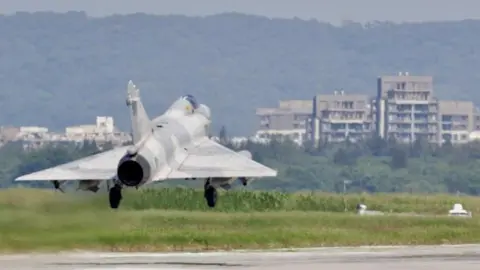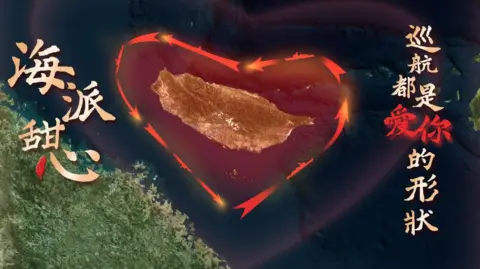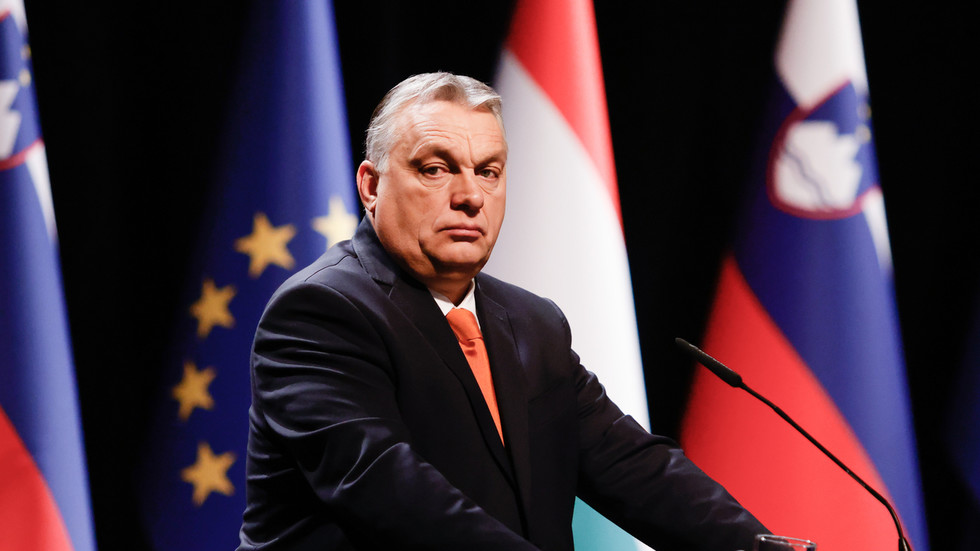
 EPA
EPA
Taiwan scrambled fighter jets in response to China's military manoeuvres
China on Monday launched new military drills off the coast of Taiwan in what it described as "punishment" for a speech given by its president William Lai, when he vowed to "resist annexation" or "encroachment upon our sovereignty".
China claims the self-governing island of Taiwan as its own and its president Xi Jinping has vowed to retake it by force if necessary.
Taiwan said it detected 34 naval vessels and 125 aircraft in formation around the island on Monday.
Maps published by Chinese state media indicated its forces were positioned around the whole island.
The Chinese military said the ongoing drills involved all wings of the People's Liberation Army, and were designed to simulate attacking Taiwan by land, sea and air.
In response, Taiwan's President William Lai said some of the island's forces had been deployed to monitor the situation and were "holding their positions".
Taiwan's airports and ports continued functioning as normal.
An earlier statement from the Taiwanese defence ministry condemned the Chinese move and said its priority was to avoid direct clashes which could escalate the stand-off further. Outlying islands were put on high alert, it added.
China's foreign ministry confirmed it had simulated military assaults and port blockades, and described Taiwanese independence as being "incompatible" with peace in the region.
A post by the Chinese coast guard on its Weibo account later noted that the route of the patrol was in the shape of a heart.

 China Coast Guard
China Coast Guard
China has held several major military drills off the coast of Taiwan since 2022 and its fighter jets regularly enter Taiwanese airspace.
The latest exercise has been dubbed Joint Sword 2024-B by Beijing and had been widely expected since May, when drills bearing the same name and officially labelled as part A were staged.
That exercise, which China described as its largest yet, were timed to coincide with the inauguration of President Lai, who Beijing has long seen as a "troublemaker" advocating for Taiwan's independence.
His latest comments, made on Taiwan's national day, were condemned by China, which said he was escalating tensions with "sinister intentions".
But while these drills were widely expected, if you look at the deployment and how close Chinese ships and aircraft are to Taiwan - as well as the fiery rhetoric - this is very aggressive behaviour.
In any other context, this would be seen as a dramatic escalation - but it comes against the backdrop of tensions that were already very high.
The US reacted by saying that there was no justification for the drills after Lai's "routine" speech, and that China should avoid further actions which may jeopardise peace and stability in the region.
The recent history of China’s military intimidation of Taiwan goes back to 1996, after Taiwan held its first direct presidential elections. China declared several areas around Taiwan off limits, and fired short-range ballistic missiles into those areas off the north and south coasts.
US President Bill Clinton quietly moved US Navy forces into the Taiwan strait to demonstrate to Beijing that the US would prevent an attack on the island.
Tensions eased considerably between 2008 and 2016 - until the leader of Taiwan's Democratic Progressive Party (DPP) Tsai Ing-wen was elected as president. China considers the DPP to be a hard line pro-independence party, and responded by cutting off all direct contacts with the government in Taipei.
That situation has remained ever since.
In late July 2022 US house speaker Nancy Pelosi flew into Taipei – the first time a sitting house speaker had visited the island since 1996. Pelosi’s visit and her open support for Taiwan was seen by Beijing as a huge provocation – coming close to a formal recognition of the government here by a very senior US politician.
It reacted with fury – holding two days of exercises and for the first time ever flying ballistic missiles over the island and in to the Pacific Ocean.

 1 month ago
8
1 month ago
8










 English (US) ·
English (US) ·